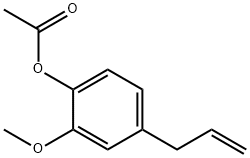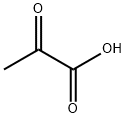4-Chlorobutyl acetate
- CAS NO.:6962-92-1
- Empirical Formula: C6H11ClO2
- Molecular Weight: 150.6
- MDL number: MFCD00001013
- EINECS: 230-158-8
- SAFETY DATA SHEET (SDS)
- Update Date: 2024-12-18 14:08:52

What is 4-Chlorobutyl acetate?
Chemical properties
clear colorless liquid
The Uses of 4-Chlorobutyl acetate
4-Chlorobutyl Acetate is a reagent used in the synthesis of novel cyclic ADP ribose derivatives. Also used in the synthesis of a transient receptor potential melastatin 2 antagonist involved in insulin secretion.
Synthesis Reference(s)
Chemistry Letters, 16, p. 953, 1987
The Journal of Organic Chemistry, 48, p. 751, 1983 DOI: 10.1021/jo00153a031
Properties of 4-Chlorobutyl acetate
| Boiling point: | 92 °C/22 mmHg (lit.) |
| Density | 1.072 g/mL at 25 °C (lit.) |
| refractive index | n |
| Flash point: | 148 °F |
| storage temp. | Sealed in dry,Room Temperature |
| solubility | Chloroform (Slightly), Ethyl Acetate (Slightly) |
| form | Oil |
| color | Clear Colourless |
| Specific Gravity | 1.08 |
| Water Solubility | inmisceable |
| BRN | 1749681 |
| CAS DataBase Reference | 6962-92-1(CAS DataBase Reference) |
| NIST Chemistry Reference | 1-Butanol, 4-chloro-, acetate(6962-92-1) |
| EPA Substance Registry System | 1-Butanol, 4-chloro-, acetate (6962-92-1) |
Safety information for 4-Chlorobutyl acetate
| Signal word | Warning |
| Pictogram(s) |
 Exclamation Mark Irritant GHS07 |
| GHS Hazard Statements |
H227:Flammable liquids H302:Acute toxicity,oral H315:Skin corrosion/irritation H319:Serious eye damage/eye irritation H335:Specific target organ toxicity, single exposure;Respiratory tract irritation |
| Precautionary Statement Codes |
P210:Keep away from heat/sparks/open flames/hot surfaces. — No smoking. P261:Avoid breathing dust/fume/gas/mist/vapours/spray. P264:Wash hands thoroughly after handling. P264:Wash skin thouroughly after handling. P270:Do not eat, drink or smoke when using this product. P280:Wear protective gloves/protective clothing/eye protection/face protection. P305+P351+P338:IF IN EYES: Rinse cautiously with water for several minutes. Remove contact lenses, if present and easy to do. Continuerinsing. P370+P378:In case of fire: Use … for extinction. P405:Store locked up. P403+P235:Store in a well-ventilated place. Keep cool. P501:Dispose of contents/container to..… |
Computed Descriptors for 4-Chlorobutyl acetate
4-Chlorobutyl acetate manufacturer
Trimax bio sciences private ltd
1Y
Phone:+918532299988
Whatsapp: +91- 8532299988
product: 6962-92-1 Acetic acid 4-chloro-butyl ester 98%
New Products
Tert-butyl bis(2-chloroethyl)carbamate (S)-3-Aminobutanenitrile hydrochloride N-Boc-D-alaninol N-BOC-D/L-ALANINOL 3-(2,4-Dimethoxybenzyl)dihydropyrimidine-2,4(1H,3H)-dione 7-Bromo-1H-indazole N-octanoyl benzotriazole 3,4-Dibenzyloxybenzaldehyde 4-Hydrazinobenzoic acid Electrolytic Iron Powder Fmoc-Val-Cit-PAB 1,1’-CARBONYLDIIMIDAZOLE R-2-BENZYLOXY PROPIONIC ACID 4-HYDROXY BENZYL ALCOHOL 1,1’-CARBONYLDI (1,2-4 TRIAZOLE) S-2-CHLORO PROPIONIC ACID (2-Hydroxyphenyl)acetonitrile 4-Bromopyrazole 5-BROMO-2CYANO PYRIDINE 5,6-Dimethoxyindanone 5-broMo-2-chloro-N-cyclopentylpyriMidin-4-aMine 1-(4-Methylphenylsulfonyl)-1H-1,2,3-benzotriazole 1-(2-Chlorobenzyl)-4-nitro-1H-pyrazole 1-(2-Nitrophenyl)-4-phenylpiperazineRelated products of tetrahydrofuran








You may like
-
 6962-92-1 Acetic acid 4-chloro-butyl ester 98%View Details
6962-92-1 Acetic acid 4-chloro-butyl ester 98%View Details
6962-92-1 -
 4-Chlorobutyl Acetate CAS 6962-92-1View Details
4-Chlorobutyl Acetate CAS 6962-92-1View Details
6962-92-1 -
 Ste-Glu-AEEA-AEEA-OSUView Details
Ste-Glu-AEEA-AEEA-OSUView Details
1169630-40-3 -
 1446013-08-6 Fmoc-His-Aib-OH TFA 98%View Details
1446013-08-6 Fmoc-His-Aib-OH TFA 98%View Details
1446013-08-6 -
 127464-43-1 99%View Details
127464-43-1 99%View Details
127464-43-1 -
 Chloro Uracil 99%View Details
Chloro Uracil 99%View Details
1820-81-1 -
 2-ETHYLPYRIDINE 100-71-0 99%View Details
2-ETHYLPYRIDINE 100-71-0 99%View Details
100-71-0 -
 13162-05-5 99%View Details
13162-05-5 99%View Details
13162-05-5
Statement: All products displayed on this website are only used for non medical purposes such as industrial applications or scientific research, and cannot be used for clinical diagnosis or treatment of humans or animals. They are not medicinal or edible.